Strasburg Museum at Hupp's Hill Visitor Center!
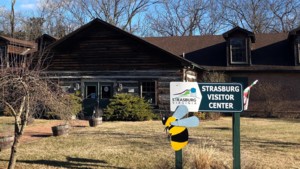 The Strasburg Visitors Center | The Strasburg Visitor and Information Center is operated by the Town of Strasburg. The Town partners with the Strasburg Museum to curate the space within the Visitor Center as their second, year-round, location! The center features multiple amenities including: Walking trails that take guests through thick woods and offer multiple glimpses into small caverns along the path. Three trail options at .25, .5, and 1 mile distances! Virginia State Tourism and Information Center Picnic tables Strasburg Museum at Hupp's Hill Public Restrooms Gift shop |
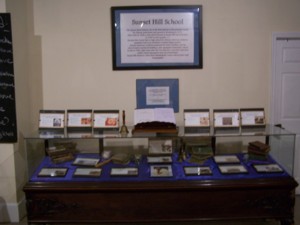 The Sunset Hill School | The Queen Street School, one of the first schools in Shenandoah County for African Americans, had opened in Strasburg by 1875. After a fire in 1929, a new school known as Sunset Hill was built here ca. 1930 to serve grades 1-7. Because the county had no high school for African American students, graduates had to go elsewhere to attend higher grades. African Americans petitioned for better facilities, and the school board considered building a new segregated elementary school as late as 1962, eight years after the U.S. Supreme Court had ruled that public school segregation was unconstitutional. Sunset Hill closed in 1964 when Shenandoah County schools were fully desegregated. |
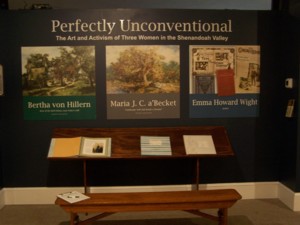 The Ladies of Fishers Hills |
Bertha Von Hillern was a champion endurance walker and nationally celebrated muralist at a time when most
women didn't do either. She walked 100 miles in 28 hours and 500 miles in five days on an indoor track where
crowds gathered to watch and bands played music to keep spirits up.
Maria J.C. a'Beckett, who traveled to the valley from Portland, Maine, also had paintings in the 1884 World's Fair and the 1893 Columbian Exposition (the Chicago World's Fair). Beckett studied in France with impressionist Charles-Francois Daubigny. Emma Howard Wight was a prolific writer of serial novels, Catholic-oriented books for children and short stories for newspapers. She adapted with the changing technology, later writing photoplays (precursors to silent films) and radio dramas. |
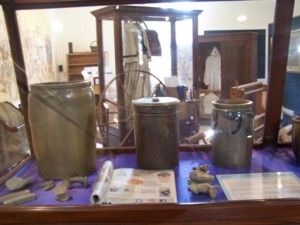 Strasburg Pottery | The Strasburg Museum has included a number of pieces of local pottery. The museum was known as The Steam Pottery (also known then as the Strasburg Stone and Earthenware Manufacturing Company) was constructed to meet the demand of pottery wares. It operated as a steam pottery until ca 1909. Many of the Strasburg area independent potters became employees of the company. Pottery for storing food was being replaced by the glass jar. Most independent Strasburg area potters marked their wares but none of the pottery manufactured in the steam pottery is known to have been marked. |
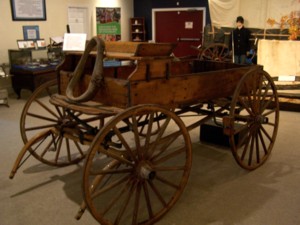 The Wagon | Baggage Carts were one of the utilitarian devices used by almost all railroads to move goods and lugage around their depots. They received little more attention than the broom in the corner, but without them, the expediency of railroad freight service would have been severely compromised. From the beginning of railroading in America in the 1830's, there was the need for getting a passenger's luggage or a store owner's goods to and from the trains. |